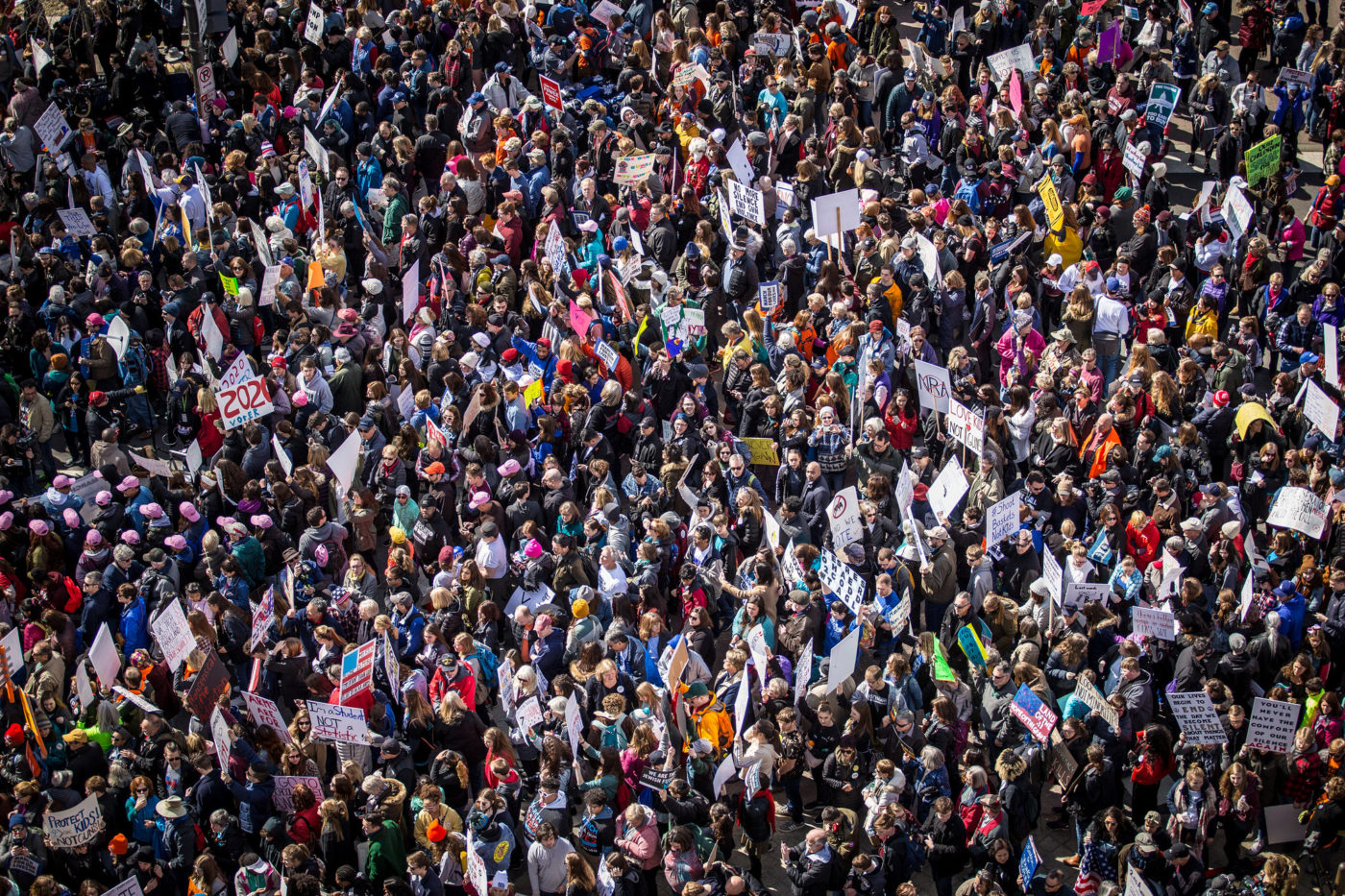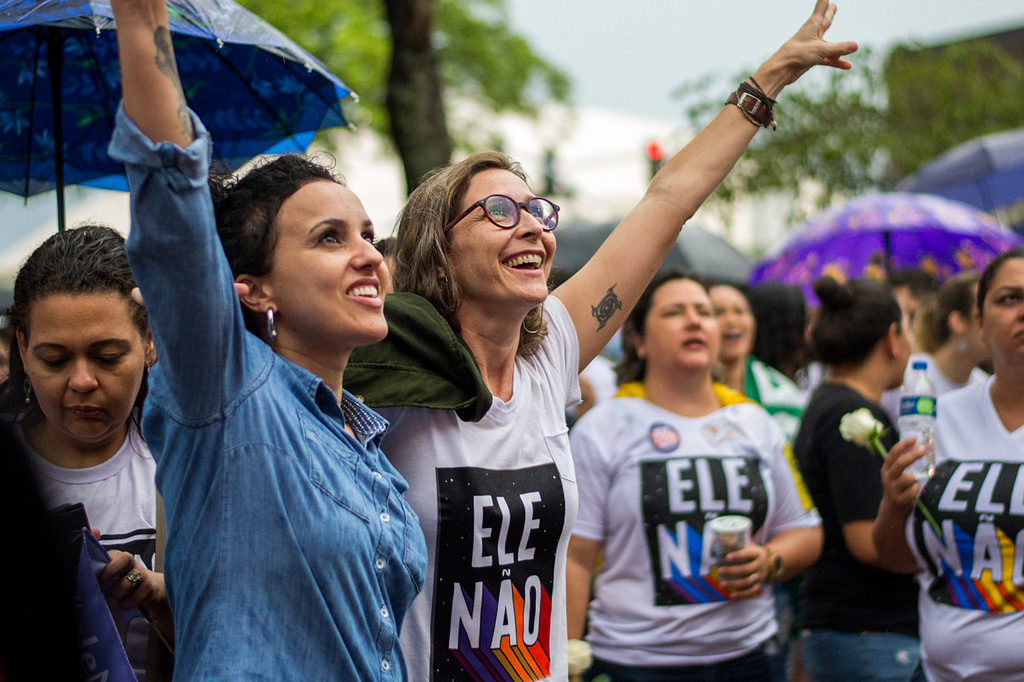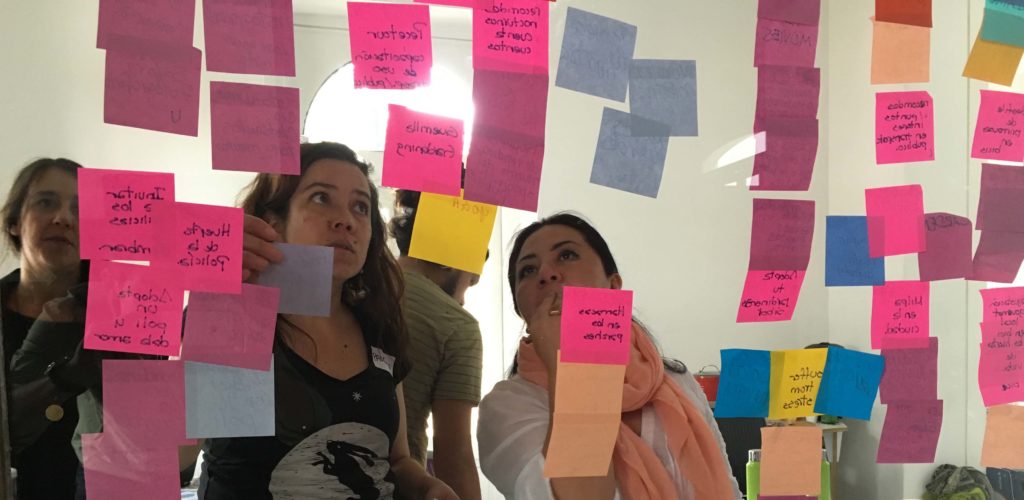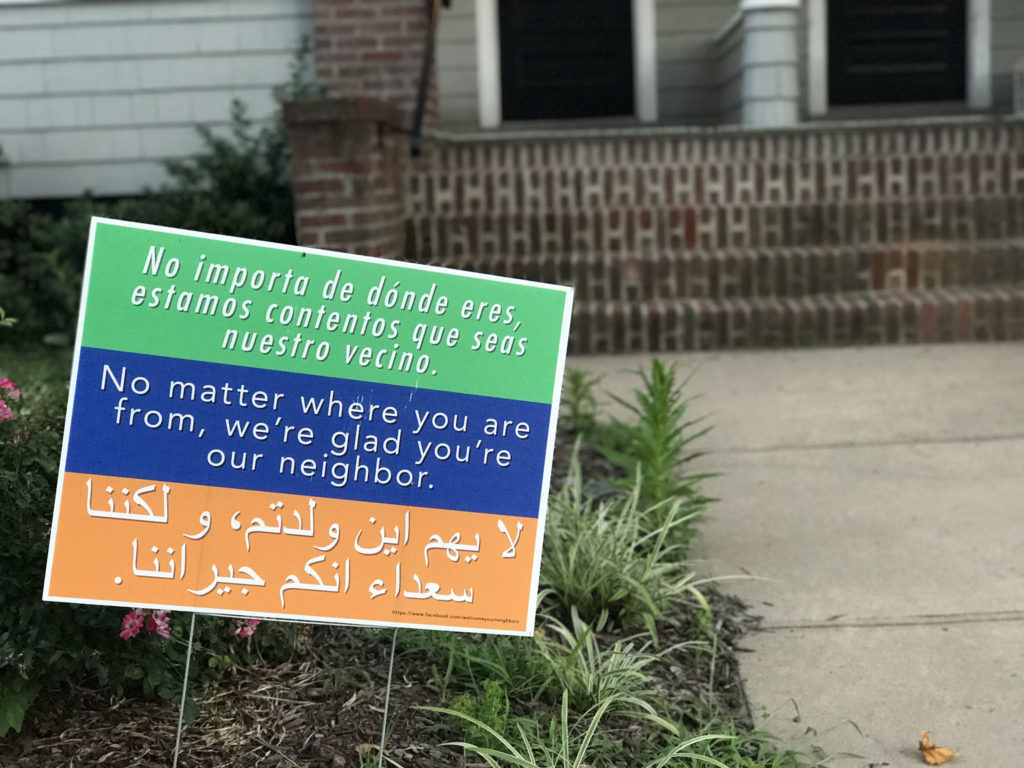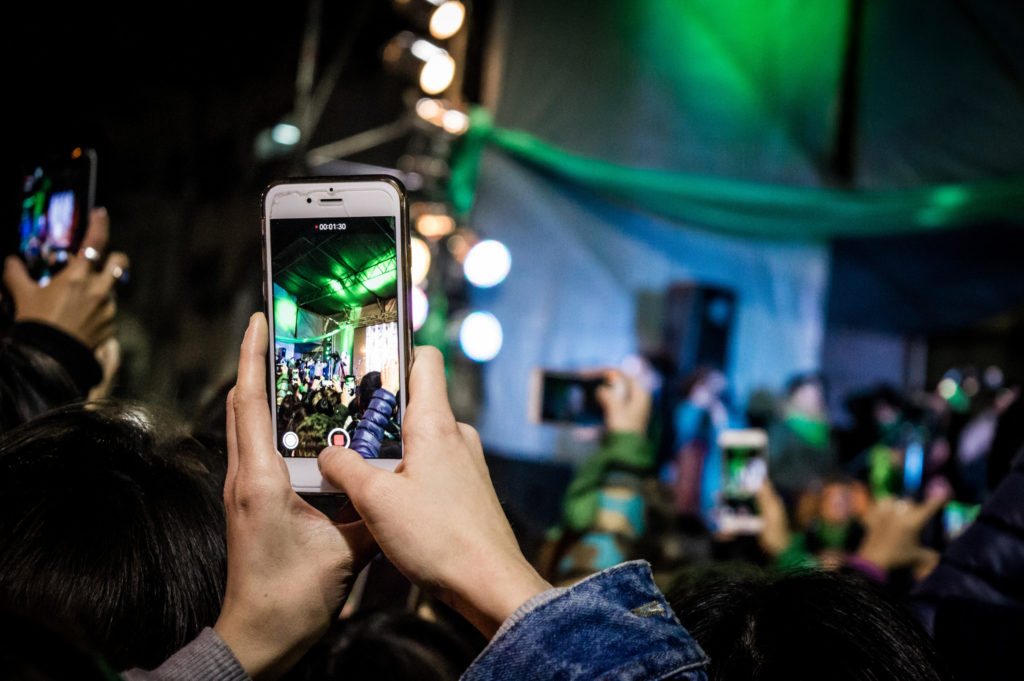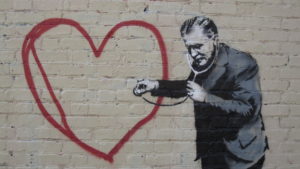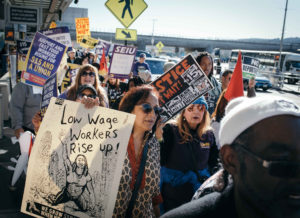For the global social change community, 2018 has been a journey of rapid response and careful preparation, of fresh perspectives and old truths, of frightening developments and fearless action.
Before we turn the page on these lively last 12 months, we want to highlight some of those campaigns, thinking and discussions that were particularly inspiring or provocative to us throughout the year.
Below is a collection of our favourite sources of campaigning knowledge, analysis and creativity, compiled by the MobLab team and members of our network. It’s certainly not exhaustive, but it’s a solid addition to any reading list.
Too busy to scroll through this whole thing? We got you. Click on the section below to skip ahead to the content that interests you most:
People power was a potent force for change
Creating a fairer, more just and more inclusive world isn’t the work of a few individuals; it requires a movement of many. After all, to disrupt firmly established social conventions requires a critical mass of people (although that critical mass could be as low as 25% of the population, according to a University of Pennsylvania study).
And throughout 2018, people connected to one another and lead the push for change more quickly and easily than ever.
Short on time? Don’t miss these top picks:
- Blueprints for Change’s How-To: Distributed Organising
- Beautiful Rising: Creative Resistance from the Global South edited by Juman Abujbara, Andrew Boyd, Dave Mitchell, and Marcel Taminato
- New Power: How Power Works in our Hyperconnected World and How to Make It Work for You by Jeremy Heimans and Henry Timms
In Argentina, the streets were flooded green as hundreds of thousands of people rallied to legalise abortion. The Senate vote ultimately failed, but the massive showing stripped away the secrecy that had once shrouded the issue.
Campaigners in Ireland took a different tactic: supporting people to have personal, values-based conversations with friends and loved ones about the importance of reproductive rights. The effort paid off, with nearly two-thirds of voters choosing to repeal the country’s constitutional abortion ban.
The Pinja Tod movement in India pushed for affordable and non-discriminatory accommodation for women students through guerrilla tactics and collaboration with key allies that fall beyond the strict scope of their demands.
Color of Change equipped thousands upon thousands of people of colour in the US — many of whom hadn’t been politically active before — to mobilise their local communities to demand the end of mass incarceration and police violence at the ballot box.
And with nimble action and digital content, the survivor-led #NeverAgain movement pushed for gun reform and mobilised young people to get out the vote in the midterm election, offering professional campaigners much to think about in terms of participatory planning and tactics.
Networks of young Oromo activists in Ethiopia overcame obstacles like state-ordered internet shutdowns to organise a nationwide strike that secured the release of a prominent Oromo politician and the resignation of the prime minister.
In Armenia, a wave of self-organised, nonviolent acts of civil disobedience sparked a revolution that also forced that country’s prime minister to step down too.
Using Facebook to connect with one other, Brazilian women from a wide slice of life led massive resistance to Jair Bolsonaro. The far-right politician may have won the election, but the bonds formed will feed the progressive movement in the critical months and years to come.
And organisers in Regina, Canada, calling for justice for indigenous youth occupied a park for nearly 200 days; the camp represented “the beginning of something better, of a stronger community and the calling for the systemic change that we need,” said Robyn Pitawanakwatof Whitefish River First Nation.
Building collective power is so effective in social change work because it’s an investment with long-term pay-off. “Mobilizing spends down resources. Organizing generates new ones,” as US political organiser Marshall Ganz wrote in The Nation.
Or as S’bu Zikode, the founder and leader of South Africa’s resilient shack dwellers movement, put it: “If you mobilise people, they will come for that particular day […] But you have not organised them because you have not been able to sustain such a gathering of them.”
How can organisations bring more people power to their initiatives?
- Our partners at the Blueprints for Change network put together a guide on distributed organisingto get campaigners started.
- The Community Canvas offered an openly accessible framework for building meaningful communities.
- Yannicke Goris from The Broker put the spotlight on ways that civil society organisations and grassroots movements can work together successfully to win change.
- Beautiful Rising: Creative Resistance from the Global South edited by Juman Abujbara, Andrew Boyd, Dave Mitchell, and Marcel Taminato profiled innovative and replicable tactics used by grassroots organisers in struggles against autocracy and austerity.
- New Power: How Power Works in our Hyperconnected World and How to Make It Work for You by Jeremy Heimans and Henry Timms explored the ways in which organisations can incorporate social movement energy into their activities and campaigns.
Organisations experimented, learned and adapted
A good strategy isn’t static. It’s creative and constantly evolving as circumstances change, needs shift, and critical moments arise.
In 2018, more and more social change organisations experimented with different ways of targeting root causes while remaining nimble — and adapted to the lessons they learned along the way.
Short on time? Don’t miss these top picks:
- “Mastering System Change” by Christian Seelos and Johanna Mair for Stanford Social Innovation Review
- “Inspired By ‘American Idol,’ Somali TV Show Aimed To Change The World” by Invisibilia Podcast
- “Definitely, Maybe” by Nancy Podcast
In Sri Lanka, what might have seemed like a quick campaign by 350 displaced Tamil to take back their homes from the Navy was actually only possible thanks to years of carefully laid groundwork, media outreach, and broad partnerships.
Nancy podcast dedicated an episode to exploring how activists in the US adopted a counterintuitive but effective “inoculation” approach that exposed people to anti-trans rights ads and then addressed their fears and ignorance head-on.
Writing for MobLab, Phil Wilmot shared Solidarity Uganda’s four-step rapid response process that allows its campaigners to keep secure while remaining effective in their work.
Invisibilia prodcast delved into how a music reality show in Somalia, developed by the United Nations, not only brought music back into the lives of Somalis, but also strategically communicated the value of democratic voting and individual expression.
Hahrie Han, the author of How Organizations Develop Activists, profiled how a church in the US called Crossroads had built a tight-knit and actively volunteering community with a strategy of defining identity not by difference, but by shared values.
As explained by Hannah Berkman and Jennifer Carnig from Spitfire, the coalition that worked to kill a “Digital Muslim Ban” in the US strategically targeted audiences that could take decisive action, such as the businesses that might bid for surveillance work contracts.
And PSI outlined how old approaches to adolescent and youth sexual and reproductive health campaigns in Ethiopia and Tanzania hadn’t delivered the depth or scale needed for impact. In response, their A360 project integrated listening and adaptation into its strategy process.
Milan de Vries, outgoing director of analytics for MoveOn, discussed why it’s not “how much” but the quality of analytics that matters when measuring campaign impact.
Oxfam India CEO Amitabh Behar observed, in an interview with India Development Review, that viewing all problems through a technical and managerial lenses encourages the creation of “band-aid solutions” instead of ones rooted in systems change.
The Critical Campaigning manifesto declared that “the Critical Campaigner will be vigilant as to not reproduce repressive power patterns in their communication” and that “any campaign in the interest of emancipation is necessarily ‘intersectoral’ in its core design.”
Citing cases studies in Egypt and India, Christian Seelos and Johanna Mair in the Stanford Social Innovation Review, put forth two approaches to pursuing systems change: changing a system by building a system, and changing a system by isolating a subsystem.
And research by Sujin Jang found that teams are more creative when they have one or more “cultural brokers”, or people who have had comparatively more multicultural experiences than others and act as a bridge between their monocultural teammates.
Storytelling was critical — but needed a rethink
“Threats matter—but emotions are the engine driving change,” wrote Kelly Bergstrand in Mobilizing Ideas, discussing how emotion can help disrupt inaction on climate change.
Storytelling is one such tool for inspiring deep emotion to move people to mobilise. But in 2018 it became clear that not just any old emotion will do.
Short on time? Don’t miss these top picks:
- “How Do We Frame Our Way Out of This Mess?” by the Public Interest Research Centre
- Stories for Advocacy Toolkit by Dance4Life and Right Here Right Now
- “Trump Has Twitter. Alexandria Ocasio-Cortez Is Winning Instagram” by An Xiao Mina and Ray Drainville for Fast Company
The Public Interest Research Centre found in their Europe-based study that a lot of what might be instinctual in storytelling, such as framing in terms of “us vs. them” instead of an expansive “us” or focusing on individual instead of collective behaviour, can undermine social change campaigns.
Speaking with the Global Futures podcast, Mathieu Lefèvre of the Paris-based More in Common underlined the important balance between narratives around an expansive and potentially cross-border “us” and narratives that are appropriately tailored to local contexts.
Stefania Kapronczay and Anna Kertész explained for Open Global Rights that campaigners in Hungary have found success with hopeful messaging that reframes human rights in a relatable way instead of reacting defensively to authorities attempts to stigmatise organising work.
In the US, research by Anat Shenker-Osorio and Ian Haney López in collaboration with Demos found that race-class narratives that call out scapegoating by greedy special interests and that call on people to unify across racial lines for the common good are particularly effective.
And Alexandria Ocasio-Cortez demonstrated a more open and accesible approach to political communication during and after her history-making and ultimately victorious US Congressional campaign.
The Stories for Advocacy toolkit, launched by Dance4Life and young sexual rights advocates in Bangladesh, Honduras, Kenya, Nepal, Saint Lucia and Zimbabwe, highlighted that “a story without a strategy is just a nice tale.”
And what’s a story without respect? While recounting lessons that 350.org had learned while experimenting with social media, Thelma Young reminded us that storytelling should prioritise ownership over clicks: “Never forget that a video isn’t a victory if it damages your relationship with partners and communities (no matter how viral the video goes).”
Storytelling isn’t just a tool for effecting outward change, but can also be used to tell the story of an organisation’s work. Hivos and Wageningen University developed a Narrative Assessment tool to help changemakers learn and re-strategise advocacy efforts based on their results.
And in any sort of communication, the words used should be chosen with care. That’s a notion that Counterpart International announced it was taking especially seriously, moving to ban the word “empower” from its vocabulary.
Technology gave a boost to campaigns for good — and ill
In 2018, we came to learn even more acutely how digital technologies are enabling bad actors throughout the world.
“Twitter can not be a platform for expression and ideas if vulnerable communities are routinely deplatformed by violence, disinformation, and hate speech,” said Dalit activist and artist Thenmozhi Soundararajan after the company walked backed its CEO’s implied support of the “smash Brahmanical patriarchy” sentiment.
But her words were also applicable to services like Facebook, Instagram, YouTube and WhatsApp, all places where hate speech, disinformation and harassment thrive.
Short on time? Don’t miss these top picks:
- “A Genocide Incited on Facebook, With Posts From Myanmar’s Military” by Paul Mozur for the New York Times
- “How Social Media Took Us From Tahrir Square to Donald Trump” by Zeynep Tufekci for MIT Technology Review
- “#MoreThanCode: Practioners Reimagine the Landscape of Technology for Justice and Equity” by the Technology for Social Justice Project
We learned details of how Myanmar’s military weaponised Facebook into a tool for genocide against the Rohingya community — and how the social media firm didn’t do enough to stop the abuse.
Zeynep Tufekci in MIT Technology Review chronicled the evolution of digital tech, from spreading democracy in its idealistic early days to undermining it today. Fred Turner in Harper’s Magazine similarly charted the transition from a decentralised internet and counterculture to digital authoritarianism.
“Fake news” served as pretext for authoritarians around the world to crack down on online dissent and consolidate their control, as noted in Freedom House’s report The Rise of Digital Authoritarianism, making social change work riskier.
Growing authoritarianism — especially as we approach an age of artificial intelligence — led to urgent calls for greater transparency and stronger cooperation between state actors, private companies, and civil society. After all, as Nicole Carty pointed out on MobLab Live, the threat affects every campaigning organisation whether or not it’s traditionally their area of focus.
And the hard realities of the digital space meant that those working for social change needed to take security more seriously. The Blueprints for Change network put together one such guide on digital security basics for campaigners.
But in more well-intentioned and responsible hands, digital tools were also an incredible force for good in 2018.
Campaigners launched messaging app chatbots to help women in the Philippines report sexual harassment, provide protesters detained in Russia with legal guidance, send alerts and information on women’s rights to users in Brazil, and organise support for undocumented immigrants in the US.
Blockchain showed promise: #MeToo activists in China used the tech to circumvent censorship, a Rohingya community leader in Malaysia tested it as a digital solution to the Rohingya’s lack of officially recognised ID, and an app called eNuk meant to help Canadian Inuit communities cope with climate change got around poor connectivity with its help.
Drones were instrumental for the Dayak of Indonesia to combat narratives claiming their lands were uninhabited. And the VR for Good initiative produced immersive experiences promoting social change.
There was certainly room for improvement in other areas, too. The #MoreThanCode report from the Technology for Social Justice Project recommended more community accountability and strategies for diversity and inclusion when it comes to tech development for good.
And the Political Tech Landscape Report from Higher Ground Labs, which outlined the key functions of a modern campaign, concluded that the progressive community “critically need[s] to shift more Messaging & Media spend towards digital media”.
Lessons in campaigning came from unexpected places
Creative campaigns win change, and creativity thrives on difference. In 2018 we found wisdom and truth outside the social change community too.
Short on time? Don’t miss these top picks:
- Membership Puzzle Project’s Member Manifesto
- Hannah Gadsby’s “Nanette”
- Winners Take All: The Elite Charade of Changing the World by Anand Giridharadas
Take the media, for example. Analysis aimed at that industry revealed insights that rang true for campaigners as well.
A run-down of what disinformation is doing “right” — responsive to news events and reactions, engages audience to participate, taps into a community’s passions and beliefs — sounded like advice on a winning campaign for change in the 21st century.
Amanda Ripley of the Solutions Journalism Network suggested that journalists (and perhaps campaigners) need to better understand how people in polarised or defensive positions react to newsbecause “it’s impossible to feel curious while also feeling threatened.”
The Membership Puzzle Project found that news sites resonate most with supporters when they are participatory and offer multiple ways for people to contribute what they know — a finding that felt applicable to membership-driven social change organisations too.
And NewsMavens, a roundup curated exclusively by women, observed that in its experience women show “consistent curiosity” about those lower down the power structure, while mass media focuses on the opposite — raising pertinent questions for leadership in journalism and civil society at large.
Beyond the media, Australian comic Hannah Gadsby’s Netflix film “Nanette” gave us a master class of how to express anger at structural oppression in a way that seeds empathy, not rage.
Researcher Casper ter Kuile found that intense fitness classes like CrossFit and SoulCycle have gained such a following because of the community they offer and the freedom they give participants to choose their own path — a lesson for organisations on the importance of depth over breadth in building relationships with their supporters.
And researchers Michael Saker and Leighton Evans found that Pokémon Go fans continue to play the mobile game because it has affected their lives for the better — helping them cope with physical disabilities, motivating them to use public transport, and providing a chance to bond with family members. Had the game’s creators provided a less meaningful journey, its popularity might not have been so sustainable.
Learning doesn’t only come from looking outward, of course. Anand Giridharadas in his book Winners Take All: The Elite Charade of Changing the World argued that powerful and wealthy philanthropists are actually making things worse for their failure to call for fundamental systemic change.
Neither does it have to come from looking forwards. The path tread just a few years ago (Groundbreakers: How Obama’s 2.2 Million Volunteers Transformed Campaigning in America by Hahrie Han and Elizabeth McKenna) or even centuries ago (Bury the Chains: Prophets and Rebels in the Fight to Free an Empire’s Slaves by Adam Hochschild) provided insight this year when revisited.
But then again, it also pays to keep our eyes towards the horizon. What will campaigning be like in 2040? asked Tom Baker on his blog. He theorised that the fundamentals might not evolve too much, but what campaigning looks like practically will. Twenty years is a long time for technology to change — and for technology to change society.
Special thanks to Dana Affleck, Chris Alford, Tom Baker, Rodrigo Barahona, Matt Browner Hamlin, Devadass Gnanapragasam, Kristen Grimm, Louise Hutchins, Sarah Jackson, Bonnie Koenig, Sho Konno, Adam Levine, Marianne Manilov, Shai Naides, Leandro Ramos, Eric Rardin, Randall Smith, Aliston Tate, Bobbie Jo Traut and everyone else who contributed their top sources of campaigning insight and inspiration for the year.
Do you want to add something to this collection? Please let us know! Reach out to us on Twitter or at editor@mobilisationlab.org with your 2018 favourites.
Featured photo: March for Our Lives. Photo by Phil Roeder via Flickr. CC BY 2.0
